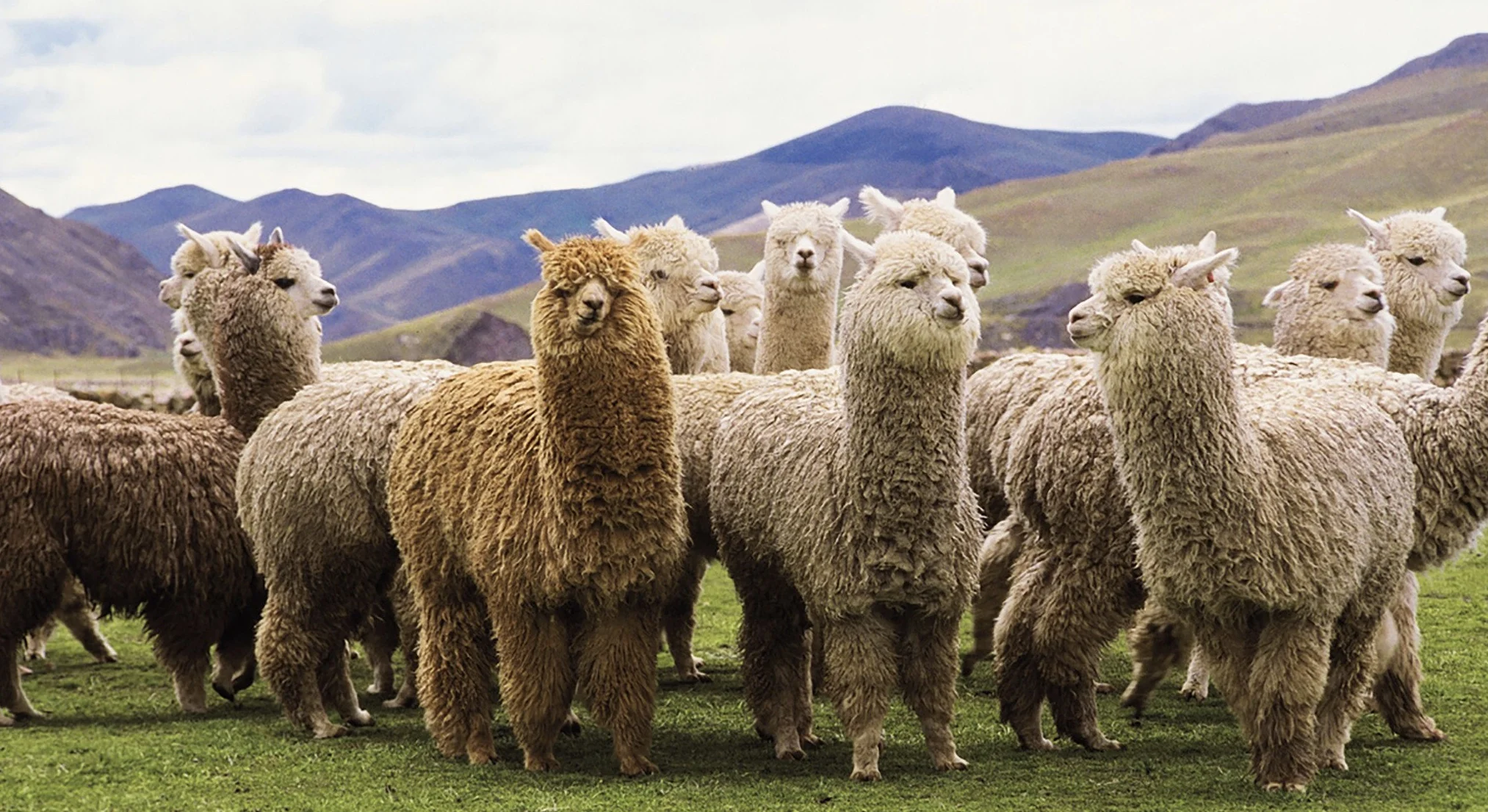For many years, cashmere has been the fabric we have turned to as the weather has turned colder. Considered a true luxury, classic cashmere sweaters guaranteed soft-to-the-touch coziness and were long-lasting additions to winter wardrobes. However, following China’s move to mass-produce the fiber it has now become ubiquitous, and not only has cashmere become significantly cheaper over the last two decades as a result, its quality has declined substantially too. The demand for cashmere, paired with the worsening environmental obstacles it is facing, beckons us to find alternatives.
To counter this, many designers have turned to alpaca as a luxurious alternative. The fiber is derived from llama-like camelids found in Peru’s highlands. And while Peruvians have been wearing knits made from alpaca fiber for centuries, brands such as Louis Vuitton and Versace are now showcasing alpaca on the runway, and MaxMara and Fendi are among those incorporating it into their collections.
Alpaca jacket featured on Louis Vuitton's SS15 runway / Photo: vogue.com
Like cashmere, alpaca is a natural fiber, but it is now regarded by many as more luxurious, softer, lighter and warmer than its woollen cousin, thanks to its longer fibers. It also pills less than cashmere and is hypoallergenic as it doesn’t contain any oil or lanolin. Alpaca is lightweight, breathable and soft, not bulky or itchy, and while the fibers are fine they are also incredibly durable, and naturally come in a range of 22 colors, from black through variations of gray, to browns and white. Cost-wise, alpaca is available across a variety of price points, so its an attractive option for multiple segments of the market too.
As well as what would appear to be a wise choice for our wardrobes, wearing alpaca is also a good choice for the planet. Unlike today’s cashmere production, which is considered by some to be environmentally catastrophic, alpaca is renewable, sustainable and eco-friendly. Peru is home to 80% of the world’s alpaca population (almost 4 million animals) and the industry surrounding them is an important local business that supports more than 120,000 families. Alpaca weaving is also a traditional craft, which today sees artisan hand knitting combined with modern technology, and the animals are not harmed during the production process.
In an age when fashion is striving to improve its record on sustainability, it would seem that switching to alpaca offers one possible solution for brands and consumers alike.





